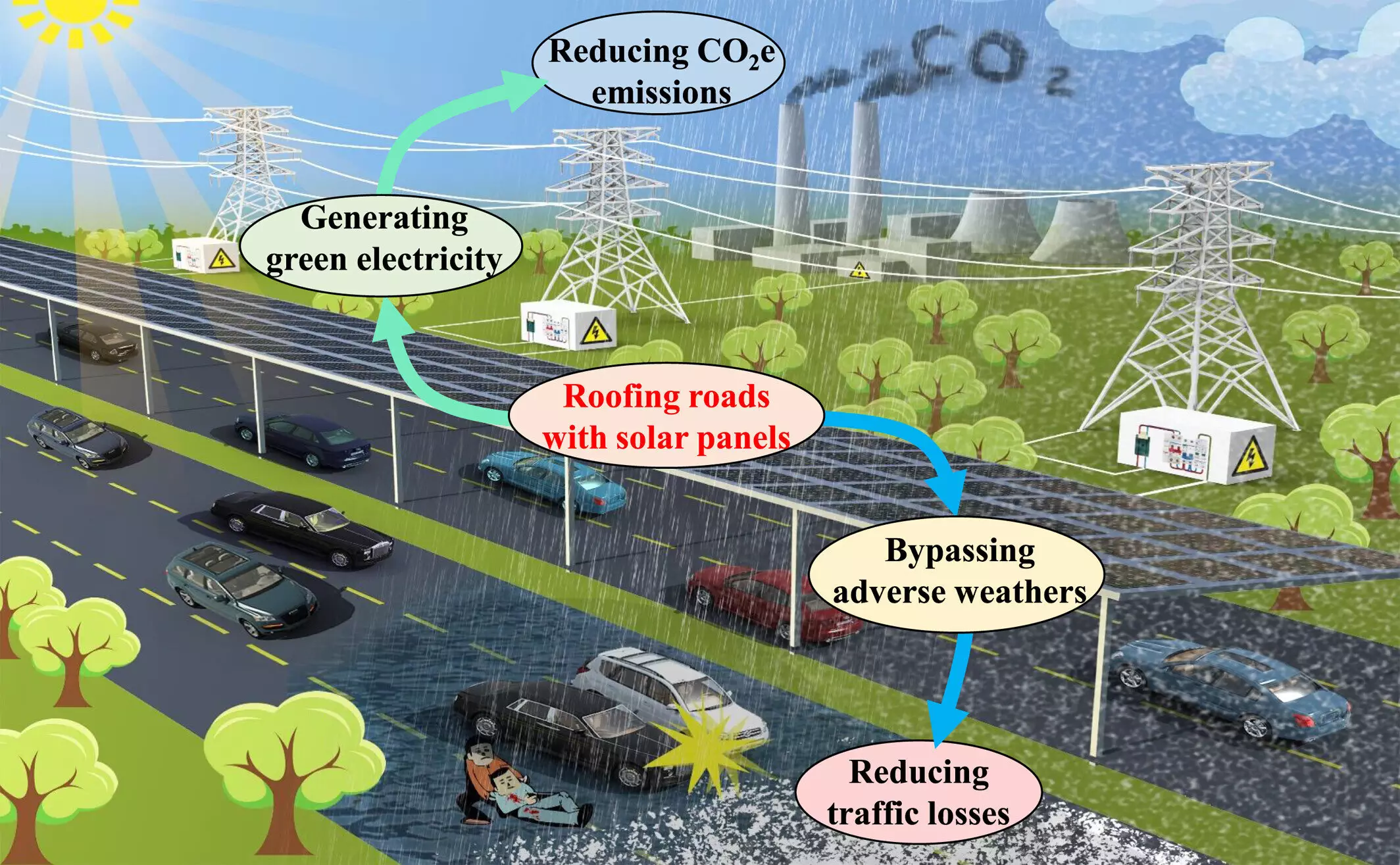In the quest for sustainable energy solutions, researchers have proposed an innovative approach: equipping the world’s highways with solar panel roofs. This concept, if realized, could significantly mitigate carbon dioxide emissions globally by as much as 28%. The idea is to retrofit the vast expanses of highways with solar panels, thereby generating substantial electricity while also protecting vehicles from harsh weather conditions. Such initiatives align with the urgent need for novel strategies to combat climate change and reduce our dependence on fossil fuels.
The research, recently published in the journal Earth’s Future, provides a detailed analysis of the logistics and potential benefits associated with this ambitious project. Lead author Ling Yao, a remote sensing scientist at the Chinese Academy of Sciences, highlights that existing pilot programs have yet to explore the full potential of this concept. Presently, only localized efforts are in place, and there is a growing need to scale up these innovations. According to Yao, converting highways into photovoltaic power generators could yield an impressive 17.58 petawatt hours of electricity annually, which represents over 60% of global electricity consumption in the year 2023.
The findings underscore an essential truth: innovative solutions are critical for meeting the climate targets set by the International Panel on Climate Change. The global installation of solar photovoltaics has increased in recent years, accounting for 40% of new renewable energy installations from 2012 to 2021. As the price of solar technology continues to decrease, transformative projects, such as solar roofed highways, could become vital contributors to the global transition toward sustainable energy.
The idea originated from a simple moment of inspiration. While commuting, Yao observed the interconnectedness of roads and conceived the possibility of harnessing this infrastructure for renewable energy generation. By utilizing existing land resources, this plan not only promotes the generation of clean energy but also reduces the demand for greenhouse gases typically produced by traditional energy sources.
Globally, highways stretch over 3.2 million kilometers, equivalent to encircling the Earth 251 times. If successfully converted to solar highways, these roadways could represent a significant jump toward energy independence. Presently, solar parking lots are gaining traction, but dedicated photovoltaic-roofed highways remain a nascent development. Existing pilot projects in various countries offer glimpses of potential, but widespread implementation is still under exploration.
The research team meticulously analyzed different regions worldwide, calculating the costs associated with establishing a network of solar panels in various countries. By focusing on polysilicon photovoltaic panels calibrated for optimum performance, their study estimated the need for around 52.3 billion solar panels to achieve impactful energy generation. This infrastructure could produce an astounding 17,578 terawatt-hours annually, exceeding the total energy output of the United States by four times. Furthermore, the additional potential from major arterial roads could yield another 13,570 terawatt-hours of electricity.
Beyond providing a clean energy source, solar highways could also enhance traffic safety. The study suggests that these installations could decrease traffic fatalities by up to 10.8%, particularly in regions prone to rain or snow. By shielding both the drivers and the roads from adverse weather, the likelihood of accidents diminishes, fostering safer travel. This added layer of safety translates to reduced economic costs related to traffic incidents and further emphasizes the multi-faceted advantages of solar highways.
However, the feasibility of this futuristic vision is not without challenges. The initial installation costs could be substantial—potentially up to four times that of traditional ground-based solar panel systems. Additionally, routine maintenance and cleaning of the vast number of solar panels present logistical obstacles that must be addressed. Despite these hurdles, Yao remains optimistic. He believes that successful pilot projects will pave the way for broader adoption and highlights that deploying these systems on expansive, flat highways may offer the best prospects.
The proposal to transform highways into solar power hubs represents a dramatic shift in how we conceive of infrastructure. By integrating renewable energy generation into existing road systems, we can foster a cleaner, safer, and more sustainable environment. It is crucial for stakeholders, policymakers, and innovators to collaborate in bringing this vision to fruition. As the world continues to grapple with climate change, embracing ideas like solar highways could be a pivotal step toward securing a sustainable future for generations to come.


Leave a Reply